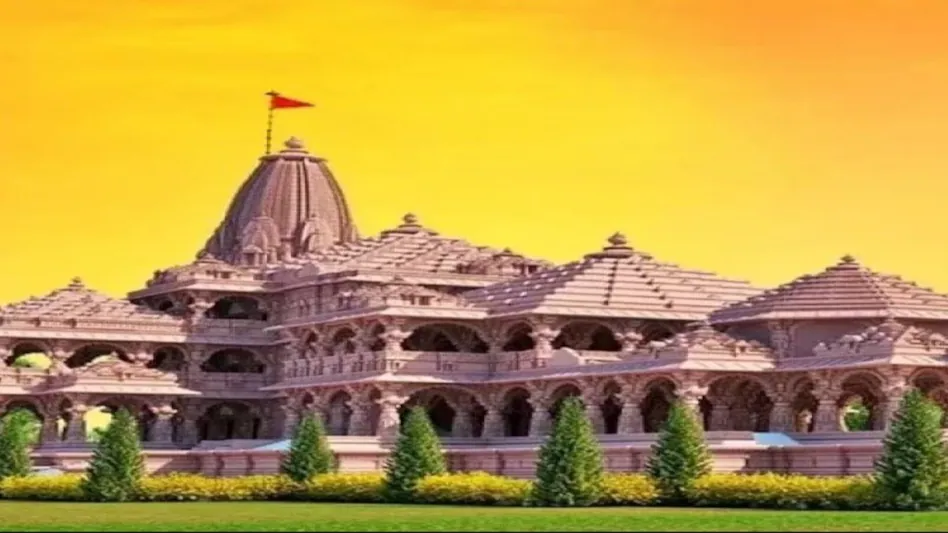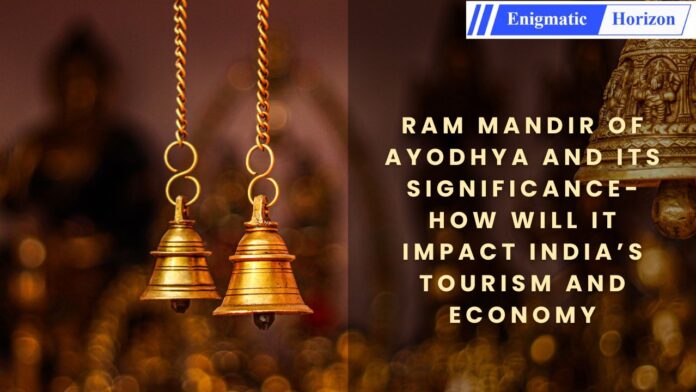Abhishek Veeran Partap
Sri Ram is one of the principal deities of Hinduism. The Ram Mandir of Ayodhya is a Hindu temple whose construction has completed at the site of Ram Janmabhoomi, which is believed to be the birthplace of Lord Rama, in Ayodhya, Uttar Pradesh. The Ram Mandir reflects the spiritual and cultural heritage associated with Lord Ram and holds immense religious and cultural significance for Hindus.
Construction:
Ram Mandir is being constructed with traditional materials to reflect an alignment of traditional building practices along with an emphasis on sustainability. It is not made up of anything normal or random that is used just for the sake of building a regular temple.
Deep-researched construction with traditional and religious meaning
It has been said that more than 550 temples were visited and studied to find the best possible architectural design, which will be relevant. Everything used in the construction is hand-picked and they hold their own religious and traditional meaning. The use of steel and iron is avoided in the construction of this mandir.
Bansi Paharpur pink sandstones from Rajasthan’s Bharatpur district have been used in the temple’s main structure. For the plinths, granite stones have been used, and for inlay work, white Makrana and colored marbles have been used. “Shri Ram” inscribed special bricks have also been used in the construction, and Teakwood for the temple’s doors has been used along with other materials like Shaligram rock, copper plates, Ashtdhatu, and gold for other works. The main temple is built in the Nagara style. The original design for Ram Mandir was developed in 1988 by a family from Ahmedabad called the Sompura family. As per Vastu Shastra and Shilpa Shastra, the old design was modified in 2020.
Impact of India’s tourism sector and the economy:
The Ram Mandir of Ayodhya is expected to boost the Indian economy and tourism significantly. It has been said that the actual cost to build the Ram Mandir in total is around 1800 crores. It collected Rs 5000 crores in donations itself from January 1, 2021, to April 2021. The very first donation of Rs 5 lakhs was made by former president of India Ram Nath Kovind.

Looking solely at the donations, it is reasonable to conclude that it will boost the Indian economy and tourism. It is expected to attract tourism to India, especially to Uttar Pradesh in large numbers. It has been claimed that around 45 lakh tourists will visit Ram Mandir every month post its inauguration, and the number will cross 6 crores in a year because it holds immense religious and cultural significance for Hindus. Many people are however criticizing the construction of the Ram Mandir, mostly due to political reasons. Some people opposing it may not believe in the concept of a temple. While some others are also accusing the ruling party of doing this, just for political gains.
While it is true that Sri Ram is and will always be present in people’s hearts, even when there was no Ram Mandir, you cannot say that making a Ram Mandir is wrong or useless, considering its historical significance and spiritual and cultural importance. No, not at all. Building the Mandir definitely has brought people together, because they feel united and hopeful. It also helps them feel closer to everyone’s beloved Sri Ram. One cannot play with people’s faiths. Ayodhya’s Ram Mandir is that faith of people which will not just help us stay united as a nation, but also hopefully improve the country’s tourism, thereby, benefitting the Indian economy.
Jai Sri Ram!
